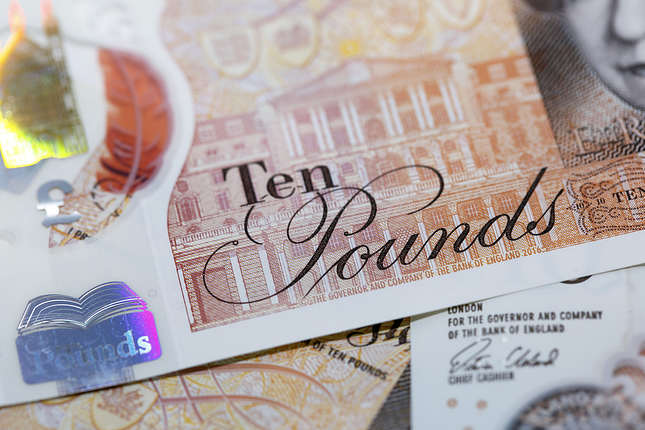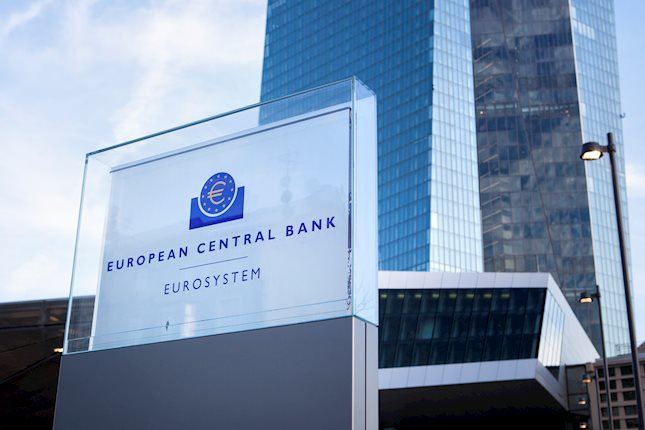Overview: The lack of details from China's fiscal briefing, the soft CPI (and deeper PPI deflation), and a smaller than expected trade surplus did not prevent Chinese equities from advancing (CSI 300 +1.9%). Industrial commodities, such as oil, copper, iron ore, are mixed. Among the G10 currencies, the Australian dollar often acts as the China proxy is off more than 0.25%. The US dollar is mostly firmer, through mostly consolidating. The Canadian dollar is a notable exception. It remains under pressure and has fallen to new two-month lows. Emerging market currencies are mixed, with Asia Pacific currencies, including the Chinese yuan are softer.
Japanese markets were closed for Health Day, but outside of Hong Kong and New Zealand, most of the equity markets in the region advanced. The MSCI Asia Pacific Index fell 1.1% last week. It was the first back-to-back weekly decline in two months. Europe's Stoxx 600 is flattish today after rising 0.65% last week. US index futures are firm. European benchmark 10-year yields are mixed. The 10-year UK Gilt yield is at a new three-month high, poking above 4.22%. German and French yields are steady, while the peripheral yields are mostly softer. Gold is firm near $2660 in the European morning, having been near $2667 earlier in the day. It has not closed above $2660 since October 1. It looks poised to challenge the record-high set late September near $2686. November WTI is off more than 2% near $73.75. It remains in Thursday's range (~$73.25-$76.25) amid conflicting signals (disappointment in some quarters over the lack of details in China's briefing and elevated Middle East tensions with US sending an advanced missile defense system and associated troops, which is understood as a sign of preparation for an Iranian counter-strike).
Asia Pacific
China is dominating the news today. On Saturday, the finance minister Lan's fiscal briefing did not contain the level of detail that many hoped for, and the broad thrust was about measures to support the finances of local governments as they support the property market. Yesterday, China reported an unexpected softening in CPI (0.4% vs. 0.6%), and a deepening of deflation among producer prices (-2.8% vs. -1.8%). PPI. Food is often heavily weighted in developing economies, and China (and India) are not exceptions. Food prices rose by 3.3%, helped by a near 23% year-over-year rise in vegetable prices. Consumer goods prices rose by 0.5%, while services prices rose 0.2% (0.5% in August). Auto prices fell by 2.3%. Excluding food and energy, China's consumer prices edged up by 0.1% (0.3% in August, year-over-year). It was September 2022 the last time China's producer prices rose year-over-year. Falling producer prices weigh producer incomes and profitability. Earlier today, China reported a smaller than expected September trade surplus. Exports (in dollar terms) rose 2.4%, the weakest year-over-year rise and down from 8.7% in August. Imports slowed to 0.3% from 0.5%. The trade surplus stood at $81.7 bln. It was $91.0 bln in August. China also reported January-September lending figures, and aggregate financing (banks and shadow banks) rose to CNY25.66 trillion. In the nine months through September2023, aggregate financing rose CNY29.35 trillion. For its part, Japan will finalize its August industrial production estimate. It initially reported a sharp 3.3% contraction. The auto and chemical producers led the decline, but many of the factors, like the government's warning of the risk of a significant earthquake in the Nankai trough and the typhoon. Industrial output likely recovered fully September-October.
The dollar consolidated at its best level in two months during the second half of last week: JPY148-JPY149.50. It is firm in Europe, slightly below JPY149.50. A weaker yen and stronger stock market may elicit little official response ahead of the election on October 27. With the US bond market closed today, continued consolidation seem is the most likely scenario. Today's low has been slightly below JPY149, where nearly $2 bln of options at today. The Australian dollar posted a four-day high settlement slightly north of $0.6750 ahead of the weekend, where about A$655 mln in options expire today. It is trading heavier today but has found support in the $0.6720-25 area. There is near-term potential toward $0.6775-$0.6800, where A$3 bln options expire tomorrow. The dollar continues to consolidate against the offshore yuan: CNH7.0750-CNH7.10. We have been looking for an upside break, but with the stimulative measures and portfolio adjustments, the usual drivers do not seem operative. The PBOC set the dollar's reference rate at CNY7.0723 (CNY7.0731 Friday).
Europe
The big week for European begins slowly. The economic diaries are light today. Tomorrow, Germany's October ZEW survey is due, and maybe there is a chance for small improvement, and a strong (~1.8%) surge in the aggregate measure of industrial output. It would be the largest rise since April 2023, and more than offset the contraction since the end of Q1 in full. The highlight, of course, is the ECB meeting and what looks highly likely to its third rate cut of the year. Fitch cut France's credit outlook to negative at the end of last week, following Prime Minister Barnier presented the 2025 budget, which will likely require invoking constitutional powers to bypass a vote in the National Assembly. Moody's will review on October 25, and S&P will do so next month. Italy is up for review by Fitch and S&P at the end of the week. Italy's 10-year premium over Germany is near 127 bp, the least since July. The UK's labor report is out tomorrow, followed by the September CPI on Wednesday. On the one hand, 0.2% expansion in August reported before the weekend would seem to warn of upside risks to the August labor market data. However, services and construction were weaker than projected. Manufacturing rose well more than expected (1.1% vs. 0.2%) but the sector is small in terms of the UK labor market (~7%).
The euro spent most of the pre-weekend session consolidating below $1.0950, where 620 mln euro in options expire today and 1.75 bln euros on Wednesday. The euro continues to trade within last Thursday's range ($1.0900-$1.0955). A move above $1.10 lifts the technical tone, and options there for also 1.75 bln euros expire tomorrow. It seems that even those inclined to buy the euro on this three-cent pullback are cautious ahead of Thursday's much-anticipated ECB rate cut. For its part, sterling is also stuck within last Thursday's range (~$1.3020-$1.3095). It held support near $1.30 last week, but the upside has not been particularly convincing. Sterling found sellers when it has poked above $1.3080.
America
This week's US economic data is unlikely to move expectations much around Fed policy. The NY and Philadelphia Fed surveys are too early to put much stock as representative of the national economy, import/export prices are part of the inflation picture, but not only are they running below domestic prices, the US is as open an economy, measured by exports plus imports as a percent of GDP (~27%). In any event, the retail sales and industrial production data on Thursday are the real sector highlights. Housing starts and permits are expected to be softer, but typically have little market impact. Corporate earnings season sees 43 S&P 500 companies report this week and expectations are for 4.1% growth, which seems like a low bar to surpass. Canada reports September CPI tomorrow. The headline looks to have softened below 2%, while the underlying core rates may be unchanged. Even after the Friday's stronger-than-expected jobs growth, the market is still leaning slightly in favor of a 50 bp rate cut when the Bank of Canada meets next week. New Zealand's central bank did not surprise the market when it delivered a half-point cut last week. The New Zealand dollar still fell, but by the end of the week it had nearly recovered fully.
Pity the Canadian dollar. A cloud was found in the silver-lining of an employment report that showed 112k increase in full-time employment. It is the equivalent of the US reporting a jump of more than a million. The Canadian dollar has an eight-session decline in tow to start this week. It remains under pressure today. The US dollar is near CAD1.3800 in Europe turnover, its highest level since early August. Outside of profit-taking on short positions, there seems to be little reason to bottom-pick ahead of tomorrow's CPI. The headline rate is likely to slip through 2% for the first time February 2021. Above CAD1.38, there appears to be little chart resistance until closer to CAD1.3850. The Mexican peso, by contrast, posted its lowest settlement for the week ahead of the weekend, near MXN19.28 and it has frayed MXN19.25 today. While the Canadian dollar has fallen, the peso has risen in eight of the past ten sessions. Only three emerging market currencies managed to gain on the greenback last week: South African rand (~0.40%), the Polish zloty (~0.2%), and the Mexican peso (0.02%). This month's low was set near MXN19.11, and a break of it sets up for a test on the MXN19.00, which the dollar has not traded below it almost two months. The dollar settled last week above BRL5.60 for the first time since mid-September amid concerns about President Lula's fiscal intentions. On the top side, the greenback has not traded above BRL5.70 since early August.
Opinions expressed are solely of the author’s, based on current market conditions, and are subject to change without notice. These opinions are not intended to predict or guarantee the future performance of any currencies or markets. This material is for informational purposes only and should not be construed as research or as investment, legal or tax advice, nor should it be considered information sufficient upon which to base an investment decision. Further, this communication should not be deemed as a recommendation to invest or not to invest in any country or to undertake any specific position or transaction in any currency. There are risks associated with foreign currency investing, including but not limited to the use of leverage, which may accelerate the velocity of potential losses. Foreign currencies are subject to rapid price fluctuations due to adverse political, social and economic developments. These risks are greater for currencies in emerging markets than for those in more developed countries. Foreign currency transactions may not be suitable for all investors, depending on their financial sophistication and investment objectives. You should seek the services of an appropriate professional in connection with such matters. The information contained herein has been obtained from sources believed to be reliable, but is not necessarily complete in its accuracy and cannot be guaranteed.
Recommended Content
Editors’ Picks

EUR/USD stays weak below 1.0950 ahead of Fedspeak
EUR/USD stays defensive and edges lower toward 1.0900 on Monday. Broad risk aversion, amid the escalating geopolitical tensions in the Middle East and conflicts between China and Taiwan, underpin the safe-haven US Dollar as markets await Fedspeak.

GBP/USD retreats to 1.3050 area as markets turn cautious
GBP/USD trades modestly lower on the day near 1.3050, struggling to build on Friday's modest gains. Sustained US Dollar strength, due to looming geopolitical risks worldwide and China's economic concerns, doesn't allow the pair to gain traction.

Gold struggles to extend recovery, holds above $2,650
After gaining more than 1% on Friday, Gold finds it difficult to preserve its bullish momentum on Monday. Although escalating geopolitical tensions help XAU/USD limit its losses, the broad-based USD strength continues to cap the upside.

Five Fundamentals for the week: Explosive Middle East, ECB decision and US Retail Sales stand out Premium
Even on a bank holiday, markets are on the move. Concerns about Chinese stimulus and the Middle East stir markets, but the calendar offers several important events with the potential to shake things up. Here are five fundamentals for the week starting on October 14.

RBA widely expected to keep key interest rate unchanged amid persisting price pressures
The Reserve Bank of Australia is likely to continue bucking the trend adopted by major central banks of the dovish policy pivot, opting to maintain the policy for the seventh consecutive meeting on Tuesday.

Five best Forex brokers in 2024
VERIFIED Choosing the best Forex broker in 2024 requires careful consideration of certain essential factors. With the wide array of options available, it is crucial to find a broker that aligns with your trading style, experience level, and financial goals.